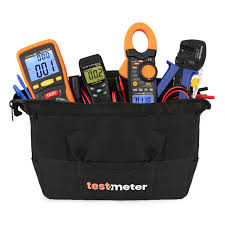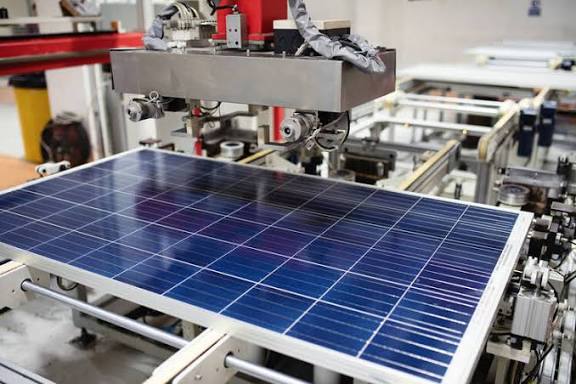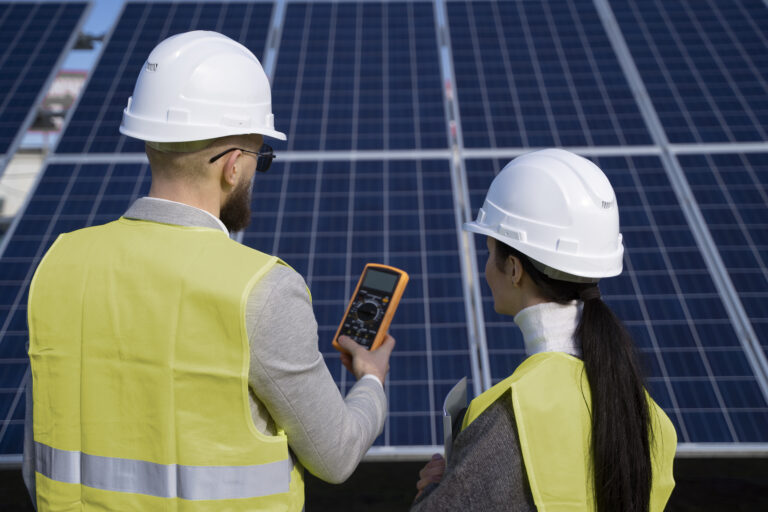Solar Installer Tools 2025: New Gear That’ll Make You Ditch Your Old Tools
If you’ve been installing solar for a few years, you’ve probably noticed how much the job has changed. Gone are the days when all you needed were a few wrenches, a tester, and a drill.
In 2025, solar installation is smarter, faster, and more data-driven than ever before. New tools are helping installers save hours on setup, minimize errors, and deliver cleaner, more professional systems.
So, if your toolbox hasn’t had an upgrade in a while, it’s time to level up. Let’s dive into The Solar Installer Tools 2025 — a list of new gear and digital tools that’ll make you rethink your old setup.

1. Smart Solar Sizing Apps (Like Globisun)
Let’s start with the most underrated tool in any installer’s arsenal — solar sizing software.
Manual load calculation is tedious and error-prone. That’s where apps like the Globisun Solar Sizing App come in.
With Globisun, you can:
- Input your client’s energy consumption.
- Automatically calculate ideal solar panel and battery configurations.
- Get instant system suggestions for different budgets.
- Export or share project summaries directly with clients.
Why it’s a 2025 essential:
It’s fast, mobile, and accurate — saving you hours of manual sizing and reducing costly oversizing or undersizing mistakes.
Installer’s Tip:
Use Globisun before every site visit to pre-calculate possible system options. It impresses clients and gives you a head start.

2. Digital Multimeters with Bluetooth Connectivity
The new generation of multimeters isn’t just for measuring voltage and current — they sync with your phone.
Models like the Fluke 3000 FC or UNI-T UT61E BT come with Bluetooth connectivity, letting you:
- Record live readings on your smartphone.
- Create reports automatically.
- Share real-time data with your team.
Why it’s a 2025 essential:
No more writing down readings by hand or guessing if you missed a connection. You can log everything digitally — fast and error-free.
Installer’s Tip:
Use Bluetooth multimeters when testing parallel string connections or inverter inputs. The logged data helps diagnose issues later.

3. Compact Cordless Impact Drivers
If you’re still using old drills, you’re working twice as hard as you need to. Modern brushless impact drivers are lighter, faster, and longer-lasting.
The Makita XDT19Z or DeWalt DCF850 are excellent examples. These tools:
- Deliver high torque in tight spaces.
- Have precision control for mounting rails.
- Last longer per charge thanks to smart brushless motors.
Why it’s a 2025 essential:
They reduce fatigue and speed up mounting — especially when working on multiple-panel arrays.
Installer’s Tip:
Keep a dedicated impact driver just for solar mounting. You’ll move faster and reduce wear on your main drill.

4. Wireless Clamp Meters
Traditional clamp meters are fine — until you need to measure current in tight spaces or multiple circuits.
The new wireless clamp meters let you:
- Read current from multiple sensors simultaneously.
- Monitor readings remotely through your smartphone.
- Detect unbalanced loads or faulty strings instantly.
Why it’s a 2025 essential:
Safety and precision. You don’t have to put yourself in awkward or risky positions just to get a reading.
Installer’s Tip:
Pair your clamp meter with a Bluetooth app for fast system diagnostics after installation.

5. Laser Distance Meters and Smart Roof Mappers
Forget tape measures. In 2025, laser-based tools are a must-have for quick, precise measurements.
Tools like Bosch GLM 50 C or Leica Disto X3 provide instant, accurate roof dimensions — perfect for panel layout planning.
Pair this with roof-mapping software like Aurora Solar or PVsyst, and you can generate full 3D layouts before installation day.
Why it’s a 2025 essential:
It makes your pre-installation survey faster, more professional, and more client-friendly.
Installer’s Tip:
Use your laser meter with Globisun’s system sizing to confirm panel counts and avoid layout guesswork.

6. Smart Torque Wrenches
Panel manufacturers now specify exact torque values for clamps and bolts. Over-tightening can crack modules — under-tightening can loosen them later.
Smart torque wrenches display real-time torque and beep when the perfect level is reached.
Why it’s a 2025 essential:
They guarantee manufacturer-approved tension — boosting safety and warranty compliance.
Installer’s Tip:
Use a digital torque wrench for every rail and clamp. It’s the mark of a true pro installer.

7. Portable Solar Power Testers
Need to test a system before commissioning? The new solar PV analyzers like HT Instruments I-V500w can measure:
- Panel efficiency.
- I-V curve performance.
- Temperature and irradiance data.
Why it’s a 2025 essential:
They help you verify every installation is performing as promised — no more “blind” handovers.
Installer’s Tip:
Always test and record I-V curves before handover. It builds customer confidence and supports your quality guarantee.

8. Foldable Solar Ladders and Safety Harness Kits
Efficiency means nothing without safety. Lightweight, foldable aluminum ladders and modern full-body safety harness kits are must-haves in 2025.
The best models include:
- Shock-absorbing lanyards.
- Adjustable roof anchors.
- Anti-slip boot grips.
Why it’s a 2025 essential:
They keep you compliant with safety standards while improving mobility and setup time.
Installer’s Tip:
Replace heavy steel ladders with foldable types — lighter weight means faster mobility between rooftops.

9. Portable Power Stations for Field Work
Sometimes you’re working at remote sites with no grid access. Portable power stations like EcoFlow Delta 2 or Bluetti AC200P can power:
- Drills and grinders.
- Testing equipment.
- Your laptop or phone.
Why it’s a 2025 essential:
They keep your tools running anywhere, anytime — no generator noise or fumes.
Installer’s Tip:
Use your own solar generator setup on-site. It’s a great marketing touch for clients to see solar in action.
10. Cloud-Based Project Management and Reporting Tools
In 2025, efficient installers don’t just build systems — they manage them smartly.
Use project management apps like Asana, Notion, or even integrate reporting directly with the Globisun App to track:
- System specs.
- Installation progress.
- Maintenance schedules.
Why it’s a 2025 essential:
Cloud collaboration keeps everyone aligned — from the installer to the procurement officer and the client.
Installer’s Tip:
Digitize your project reporting. It enhances accountability and reduces paper clutter.
Conclusion: The Future of Solar Installation Is Smart, Fast, and Data-Driven
If your goal in 2025 is to work faster, safer, and more professionally — these tools are your new best friends.
From digital sizing with the Globisun Solar Sizing App to Bluetooth-enabled testers and smart wrenches, the modern solar installer’s toolkit is all about precision, connectivity, and convenience.
The days of guesswork are over.
Now, it’s about working smarter — not harder.
So, before your next installation, ask yourself:
Are you still using yesterday’s tools for today’s jobs?
Because in 2025, the smartest installers aren’t just installing solar — they’re mastering it.






